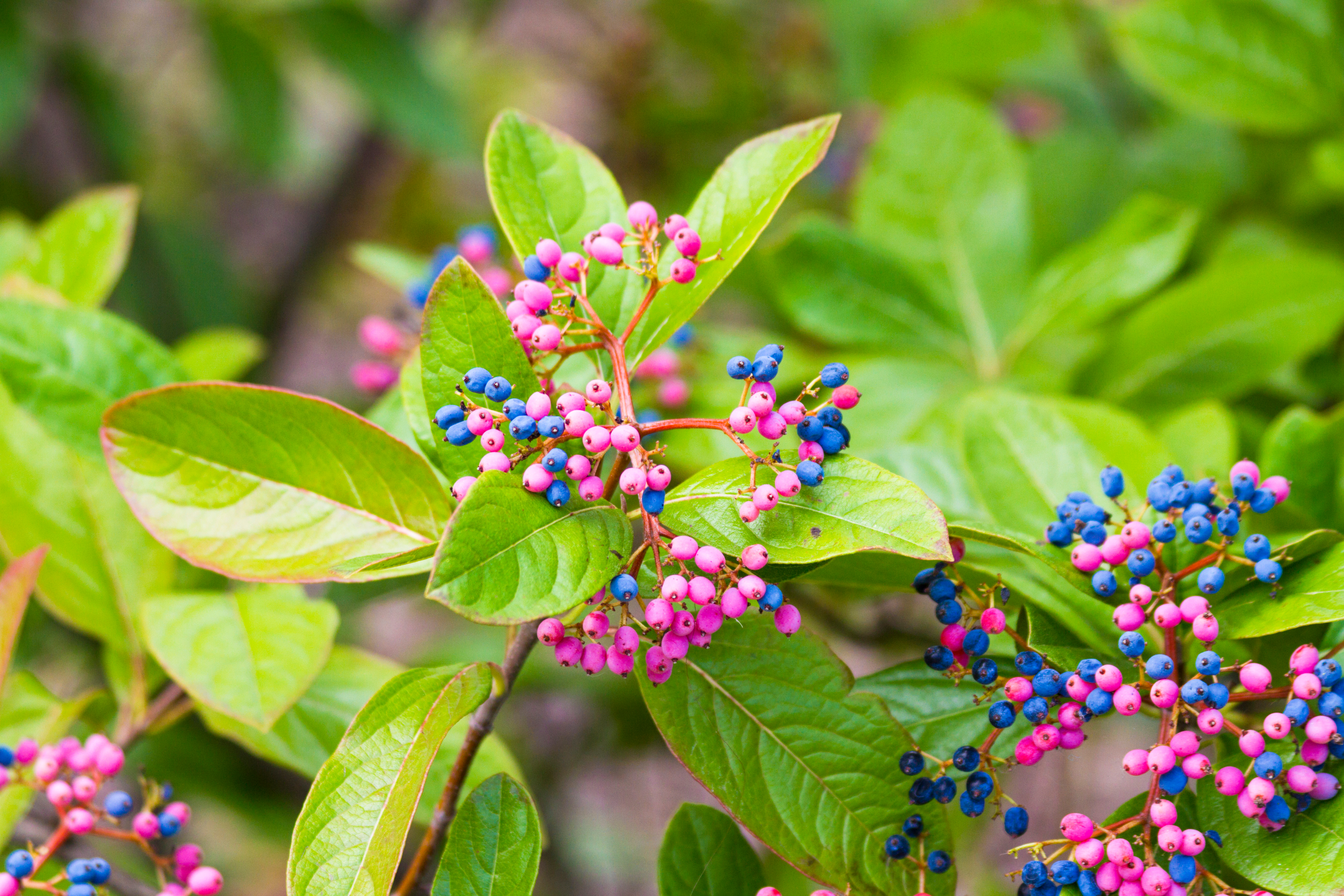Smooth witherod
(Viburnum nudum)

Description
Viburnum nudum is a deciduous shrub in the genus Viburnum within the muskroot family, Adoxaceae (It was formerly part of Caprifoliaceae, the honeysuckle family). One variety of the species is Viburnum nudum var. cassinoides; synonyms for this variety Viburnum nitidum Aiton, Viburnum cassinoides, Viburnum cassinoides var. harbisonii, Viburnum cassinoides var. nitidum, and Viburnum nitidum. Common names for the plant include withe-rod, witherod viburnum, possumhaw, and wild raisin. Viburnum nudum is a shrub with opposite, simple leaves, on slender stems. The flowers are white, borne in late spring. It is native to North America from southern Ontario and Quebec to Newfoundland, south to Florida, and west to Wisconsin. The fruit is eaten by wildlife, and deer browse the foliage. It is a larval host to spring azures and hummingbird clearwing moths. It is listed as endangered in Kentucky and Pennsylvania and as special concern species and believed extirpated in Connecticut. The Abenaki use the fruit and the grains of var. cassinoides for food. The Algonquin people eat the berries of var. cassinoides. The Cherokee have several medicinal uses for Viburnum nudum var. cassinoides. They take an infusion of it to prevent recurrent spasms, use the root bark as a diaphoretic and a tonic, and take a compound infusion of it for fever, smallpox and ague. They also use an infusion of the bark as a wash for a sore tongue. Viburnum is a genus of about 150–175 species of flowering plants in the moschatel family Adoxaceae. Its current classification is based on molecular phylogeny. It was previously included in the honeysuckle family Caprifoliaceae. The member species are evergreen or deciduous shrubs or (in a few cases) small trees native throughout the temperate Northern Hemisphere, with a few species extending into tropical montane regions in South America and southeast Asia. In Africa, the genus is confined to the Atlas Mountains. The generic name Viburnum originated in Latin, where it referred to V. lantana. The leaves are opposite, simple, and entire, toothed or lobed; cool temperate species are deciduous, while most of the warm temperate species are evergreen. Some species are densely hairy on the shoots and leaves, with star-shaped hairs.
Taxonomic tree:







